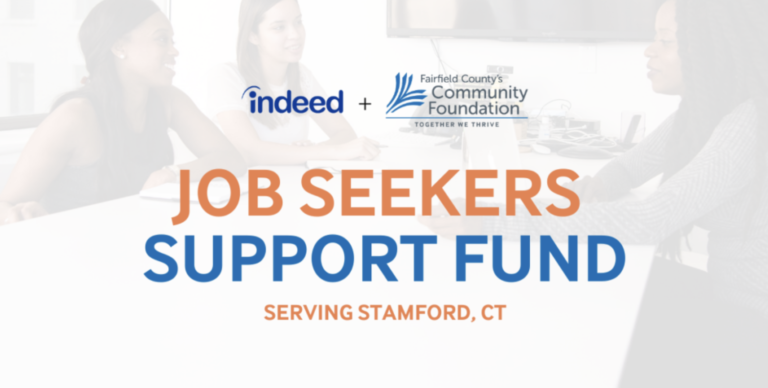Analyze This: Data & Analytics Drives Growth in Stamford
Data and analytics expertise is the fourth industrial revolution’s foundation. Here’s how Stamford, and Connecticut, are securing leadership.
Data and analytics expertise is the core capability propelling Connecticut’s economic competitiveness in the future, according to Stamford Partnership CEO and Stamford Innovation Week Founder Jon Winkel.
“We are in it now, the fourth industrial revolution,” said Wes Bemus, executive director of StamfordNext. “Connecticut did well in the second industrial revolution, while California did particularly well in the third,” he observed. “I believe Connecticut is positioned to take back leadership in the fourth industrial revolution.” StamfordNext is a non-profit funding the development of the startup ecosystem in Stamford.
The World Economic Forum defines the fourth industrial revolution as “… a fusion of technologies that [blur] the lines between the physical, digital, and biological spheres.”
Data is the raw material of business today, according to Margaret Feeney, director of UConn Stamford’s Technology Incubation Program. “We have only scratched the surface on the problems we can solve using data.
Recognizing that you need people with data and analytics expertise is easy. Rousing them from their busy offices, and inspiring them to meet, learn, discuss and find inspiration is quite another. However, the fuel that propels these experts is a platform that facilitates new ideas, startups, and spin offs. That platform is the Data Analytics Leaders Network (DALN).
The one word that describes this type of progress for data and analytics capabilities in Stamford: “Natural,” Feeney said. “Stamford has an incredible amount data and analytics expertise, it is only natural that platforms like DALN emerge.”
The network enables executives, professionals and entrepreneurs to discover insights, information, and connections. They return to their offices with insights, ideas and connections that can grow their businesses, or launch new ventures.
r4 Technologies founder and CEO Paul Breitenbach led a DALN discussion on how artificial intelligence can help us tackle today’s biggest issues.
Advanced technologies like AI allow humans to analyze disruptions that have no precedent. The right expertise can lead to new forecasting models for events that have never happened before. These solutions allow us to predict new market segments as they unfold.
Data and Analytics Expertise in Stamford
The Stamford area enjoys a diversity in the companies that do business here. They represent the broad swath of American industry. Sectors include digital media, arts and entertainment, financial technology, and manufacturing. Expertise in data and analytics gives every business and startup a gateway to change, grow and lead in the fourth industrial revolution.
The need is here, as are the people who can fill the need. That’s why Feeney and Winkel launched the Data and Analytics Leaders Network earlier this year.
“We believe the region is home to voluminous talent in data and analytics. However, they needed a social and network home,” Winkel said. The Stamford Partnership is a public-private collaboration that is part convener, part think tank and part incubator.
Winkel and Feeney concluded that if they built DALN, the data and analytics experts would come. Stamford Innovation Week’s existing following was key.
“That got us off to a quick start with a great group of leaders,” Feeney noted. “The first two events drew about 100 attendees each.”
The ideas flowed quickly and the needs became apparent. Winkel and Bemus cloned DALN’s success to create the Cybersecurity Network as well as the Regional Sector Partners. The latter is a group of CEOs who coordinate with the Stamford Partnership, CTNext and the Governor’s Workforce Council.
More success followed with a StamfordNext grant for TechHub. This initiative sponsors in-person programming at Third Place most days of the week. Topics include cybersecurity and innovation entrepreneurship, as well as DALN events.
“The people who came to Stamford Innovation Week are now the users of the next generation of technology,” Bemus explained. “StamfordNext grants for Third Place and TechHub allow us to create a network of forward-thinking leaders. It’s a collision zone of diverse people, expertise and ideas.”
The advantage for existing businesses is clear. But that’s not enough for industrial revolution leadership. Mixing people with diverse domains of expertise in business, computing, design and the humanities is more than a social exercise. It’s how you discover the solutions that will define the fourth industrial revolution.
“It’s called a ‘revolution’ because it will spawn entirely new industries. We will see products and services that we haven’t thought of before,” Feeney said.
Bemus adamantly believes this expertise is vital to every industry. “Any company that under-funds data and analytics capability is very likely to be out of business in 10 years. That’s because data allows you to discover what works and create the critical flywheel effect,” he emphasized.
Stamford Area Companies That Define the Fourth Industrial Revolution
The people who will define the fourth industrial revolution are in the Stamford area right now — as are their companies.
Coegil: Turns your data into a prediction pipeline overnight. Extract actionable insights and overcome your challenges with Excel.
Whether: UConn startup that uses AI to help asset owners prepare intelligently ahead of extreme weather events and react decisively during them.
Tru Optik: Provides privacy-compliant data-driven solutions for targeting, audience measurement, data management and identity resolution across streaming media. (via truoptik.com)
“This is an exciting time for data and analytics,” Feeney said. “We will see hybrid ideas and models bubble up, and game-changers will emerge.”
It’s how you get to lead an industrial revolution.


